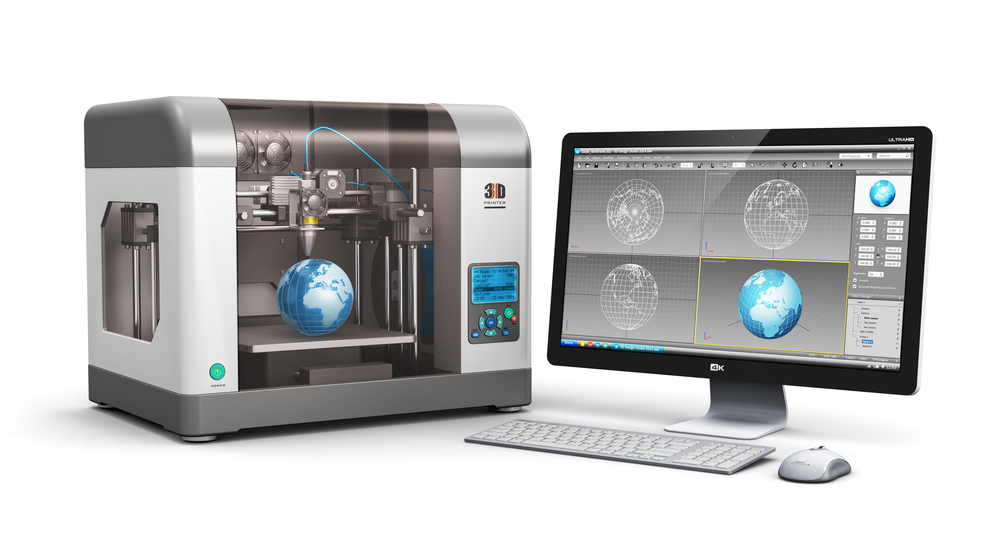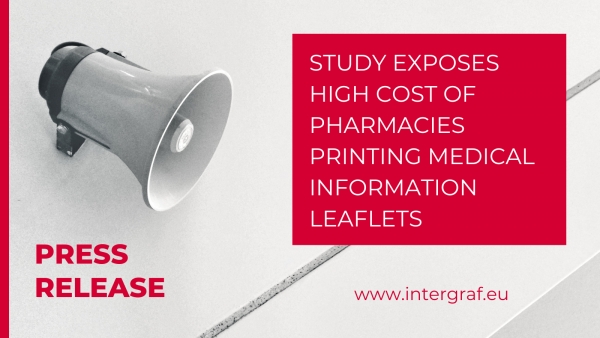December 2021

Top 20 disruptive technologies set to revolutionise printing through to 2031
The coming decade will see all industries grapple with the challenges of being more sustainable while the planet's human population continues to grow and the global middle class, with discretionary spending power also burgeons. The COVID-19 pandemic has also brought about huge changes in the way businesses and individuals behave and operate which will have sustained impact over the coming decade.
This report identifies and analyses the key disruptive technologies that will impact print to 2031, based on interviews with key industry experts across the print value chain. Technologies are scored on the likelihood of their application in the forecast timeframe, and on their predicted market impact.
Among the 25 technologies discussed in the report, the top 10 disruptive technologies identified in this review are:
- Artificial intelligence
- Robotics/cobotics
- 5G
- Augmented reality
- Digital print for packaging
- Blockchain and other means of secure transaction
- Mono-materials in packaging
- Non-fossil fuel derived chemistries for inks, coatings and substrates
- 3D printing
- High coverage digital printing/coating technologies
Exclusive content
A definitive list of the top 25 most disruptive technologies to impact the print industry over the next 10 years. The report considers the potential trajectories of the print industry in light of these technologies
Interviews were undertaken with key industry experts across the print value chain, including brand owners, printer OEMs, ink manufacturers, substrate producers, colorant and polymer producers, printhead suppliers and print technology venture capital investors.
What will you discover?
The key drivers for print innovation include: sustainability; socio-economic trends; the changing face of retail; productivity & connectivity and competition from electronic information distribution
The underlying technology used to deliver a sustaining innovation may be incremental (a modest development of an existing technology), radical (delivering a large step forward in performance using new technology), or something intermediate between these. Sustaining innovations are important in developing the potential of a technology to address market needs.
Innovation will be essential to the ongoing evolution of the print segment: driving R&D that can meet the pressing demand for greater digitisation, sustainability, productivity and automation, according to the latest expert survey from Smithers.
For a global market worth $760.6 billion, this demand is especially pressing. Much of the print landscape has been fundamentally reshaped by Covid-19 with the emergence of new business and buying models, coupled to a decline in many traditional media segments.
In its latest in-depth technical investigation - Ten-Year Forecast of Disruptive Technologies in Print - Smithers assesses the market potential for 23 such innovations in the print industry through to 2031. This ranges from direct innovation fitted to print equipment, through to the integration of broader technology and Industry 4.0 concepts over the next decade.
Smithers' expert analysis examines each of these, including their individual disruptive potential, cost of implementation, outstanding market and technical barriers, and leading contemporary technology suppliers. The trends identified are sub-divided into nine broad topics:
- Print process innovation will include the deployment of new high viscosity inkjet systems, allowing new substrates to be printed. There is also potential for offset inkjet printing, with graphics jetted to an intermediate surface, and dried before application to the final substrate. Higher speed electrophotography (toner) print will be enabled by the commercialisation of HP's LEPx technology. While in analogue, greater automation will bring new efficiencies to flexo presses;
- In market applications, the main drive will be to develop digital systems to print on packaging substrates - corrugated board, folding cartons, and flexible plastics - as well as integrated digital finishing. Other opportunities in packaging and beyond will come from the wider use of inkjet in direct-to-pack and direct-to-object applications;
- From a materials and chemistry perspective, presses will need to handle and print at high quality on a new generation of flexible paper, biopolymer, and monomaterial plastic stocks. For consumables, ink makers are changing formulations to develop inks sets that incorporate more natural, sustainable ingredients;
- In terms of workflow innovation - the main opportunities will come from wider automation, and digitisation of commercial and packaging print workflows. This will leverage innovations in robotic handling and the installation of the first generation of cooperative worker-robotic systems, or ‘cobots;'
- A parallel development will see print specific artificial intelligence (AI) software deployed in press design, pre-press and finishing;
- The increased digitisation of print will be enhanced at the same time by the wider roll-out of 5G connectivity, and by the end of the decade 6G telephony networks. Other advances that could be leveraged include commercial accessibility to quantum computing power via the Cloud;
- Augmented reality (AR) platforms will also be harnessed, for both B2B and B2C interactions. This includes better, more sensitive technical and service support from OEMs; and new value-adding print options for consumers in education and advertising.
Smithers critically assesses the route to market for these technologies across the next decade and examines how they will disrupt conventional print business models - while creating new sales opportunities for OEMs, print service providers, and their customers.
Source: Smithers, www.smithers.com
Downloads Intergraf Economic News (Paper Prices) - March 2024
Intergraf Economic News (Paper Prices) - March 2024
March 2024
Access the latest edition of the Economic Newsletter for the European Printing Industry for data on paper consumption, and pricing data for pulp, paper and recovered paper. Data for packaging papers and board is also available with this edition.
 STUDY EXPOSES HIGH COST OF PHARMACIES PRINTING MEDICAL INFORMATION LEAFLETS
STUDY EXPOSES HIGH COST OF PHARMACIES PRINTING MEDICAL INFORMATION LEAFLETS
March 2024
Intergraf welcomes the release of a study by our partner MLPS (Medical Leaflet = Patient Safety), a subgroup of the European Carton Manufacturers Association (ECMA) shedding light on the potential economic costs associated with the proposed use of Print on Demand (PoD) leaflets in the pharmaceutical legislation revision.










